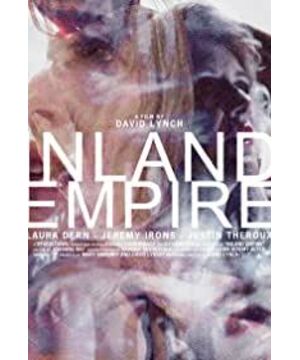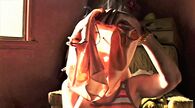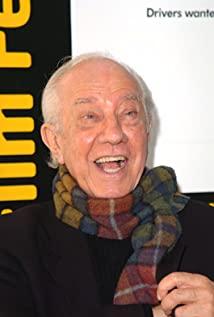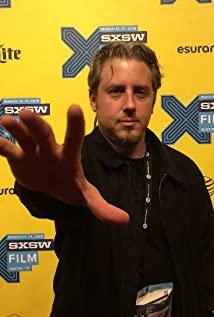"Inland Empire" is the most difficult and weird movie by David Lynch. Lynch puts the whole movie in the repeated entanglement of reality and illusion, reason and desire, subconscious and consciousness.
The heroine played by Carolina is full of complaints about real life, and she tries to find an outlet for the unsatisfactory life. At the beginning of the film, after Carolina had a relationship with a stranger in a hotel, she sat alone on the bed and watched TV. In her eyes, a sitcom performed by three bunny men appeared. The film unfolded and led to a series of weird s story. But is this really a TV show? The TV, which was full of snowflakes when the screen was switched, gave a negative answer.
The scary rabbit house and the magnificent palace are staged two stories that seem to be unrelated. There was a single line between the rabbit people that caused the audience in the story to roar with laughter, but it made the audience outside the play feel inexplicable fear, and the abominable man in the palace was even more disturbing. The two stories themselves are fragmented and illogical, which is more like a psychological activity of the heroine. Lynch is playing cat and mouse game with the audience, and he is passionate about it.
Although David Lynch claims that his works have never been influenced by Freud's theory, his works often involve a lot of content about consciousness and subconsciousness, and Freud's theory can explain all of this very well. .
Freud divided the human psychology into three parts: conscious, preconscious, and unconscious (subconscious). Consciousness is direct perception. Pre-consciousness is the part that is not aware of but can be remembered, while the unconscious (subconscious) cannot be realized by oneself. It is a "great warehouse" of people's past experience. Lively.
Lynch uses the rabbit house and the palace to represent the protagonist's preconscious and unconscious (subconscious) respectively, and they are connected by a door.
In Freud's view, the former consciousness of consciousness, or the former consciousness of consciousness, are all things in a blink of an eye. Although there are boundaries between the two, there is no insurmountable gap. It is very difficult for the unconscious (subconscious) to return to the consciousness, because the barriers between the two are clear. It seems that there is a tight defense at the door of the consciousness, and the instinctive desires in the unconscious are not allowed to invade at will. Freud called this defensive role "inspector" or "inspector."
The black rabbit travels freely between the rabbit house and the palace, which shows his identity as an "inspector", and his dialogue with other rabbits in the rabbit house shows his dual identity. This is also why Lynch did not fully comply with Freud. A corroboration of the German theory.
In the palace on the side of the gate in the movie, there is a restless, odious man. Similar images often appear in Lynch’s works, such as the browless man in "Lost Highway", and "Muholland Road". The weird people around the corner of the restaurant, they are the protagonist’s demons. The demons in "Nei" clamored to find an entrance, suggesting that he was trying to bridge the gap that had never been conscious of preconsciousness.
The black rabbit (the inspector) enters the palace through the gate, and then releases the demons. Instinctive desire enters the preconsciousness, causing a series of fantasies of revenge. This weird opening set the keynote of the entire film.
The old woman acts as a prophet, similar to a guide, or a story outline. The prophet predicted Carolina’s behavior: ①The girl lost her way in the market, she crossed the back road, which was the way to the palace; ②We are all forgetful, but I am the most forgetful one; ③The behavior leads to The aftermath... brutal murder.
The heart demon is the root of all hatred. He enters Carolina's preconsciousness and dominates her subsequent fantasies-revenge against her husband by cheating.
Under his guidance, Carolina conceived three derailed stories, incarnation of herself as Laura Dunn, to avenge her husband who had an affair in reality. The three stories are the first-level dream "Hollywood Actress", the in-play "ON HIGH IN BLUE TOMORROW (47)", and the parallel dream "The Poor Laura".
Lynch disrupted the three stories in time and interspersed each other, making the audience rack their brains. And Carolina appears in different stories as Laura, but she does the same thing-cuckold her husband. The relationship between these three stories has been interpreted in detail by many film critics, so I won’t repeat them here.
The rabbit releases the demons and dominates the main line of revenge. Although Carolina retaliated against her husband, she did not feel real happiness. In the multiple switching between reality and illusion, the scene showed that she was sitting next to the TV with tears streaming down her face.
In the second main line, the black rabbit released another important role-the listener, allowing Laura to express her dissatisfaction in the real world.
The listener wears small glasses crookedly and is taciturn, but it is the key to the heroine to get rid of the demons, because sometimes people can't think about it just because there is nowhere to tell (how simple the truth is, but in reality it is often ignored).
There is a considerable length of the film where Laura is telling, and the listener only asks occasionally. Laura complained about her husband’s work, the weird things that happened in Eastern Europe, that her husband’s sister killed someone and lost a leg. All of this was "really rubbish", but then she said, "But it's also very interesting. People, there are all kinds of weirdness. Various ways of living".
Obviously, this is the true story of the heroine in the real world. Laura's self-resolving chat released the grievances suppressed in her heart.
The film comes to an end in the alternation of the two main lines of listening and revenge. Laura finally understood that hatred can only bring destruction, and at the suggestion of the listener, she took the pistol and killed the demons. The film immediately swept away the dark and suppressed tones, becoming bright and cheerful, and the heroine returned to the real world to embrace her family and cry.
The title of Inland Empire is said to be inspired by Lynch and Laura when he chatted with Laura. Lynch felt that the words Inland and Empire were cool, so he spliced them together. In fact, it refers to the vastness of people. Consciousness system. Lynch likes to use inspiration to name films, so his titles are often overwhelming, just as he used "Lost Highway" to name his other thriller mystery film, and the distributor Fearing to mislead the public, he paraphrases it as "Monster Night Panic".
View more about Inland Empire reviews











